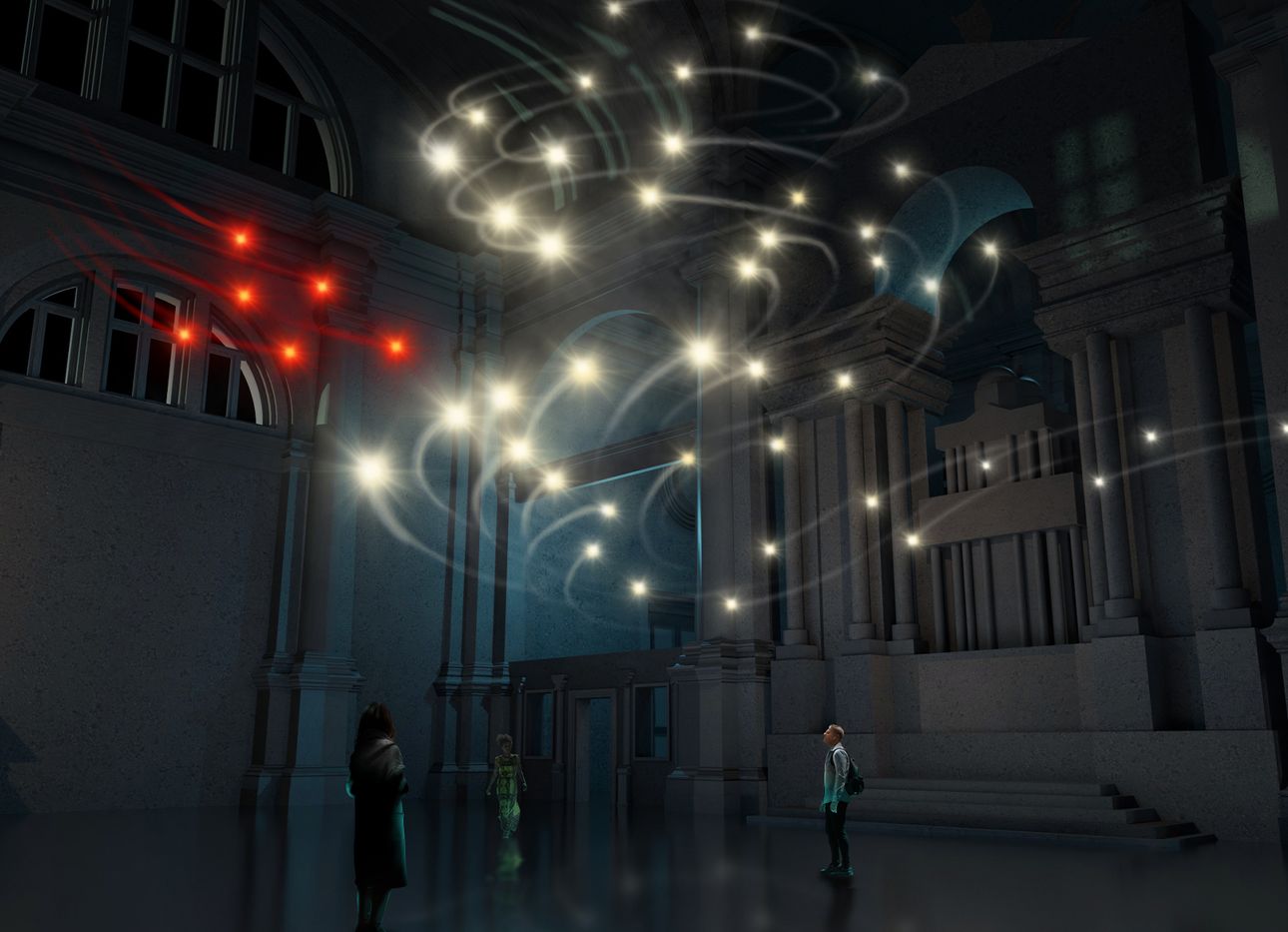
In Venice, “CodeX” Offers an Optimistic Take on the Future of Art and Technology
Non-fungible tokens, or NFTs (one-of-a-kind digital assets created using blockchain technology), have divided the art world: Some, like the artist Kenny Schachter (who speaks about the medium on Ep. 59 of our Time Sensitive podcast), see them as pathways to a promising future, while others express concern around the sky-high price points and carbon emissions they generate.
Aorist, a new cultural organization that commissions artists to make NFTs (and often, corresponding physical works) and sells them on its digital marketplace, seeks to redefine NFTs as part of an exciting creative revolution, and to make them more approachable in various ways. It prices its NFTs in USD, for example (NFTs are typically bought with cryptocurrency), and accepts forms of payment such as ACH wire and credit cards as well as crypto. In addition, Aorist’s NFT marketplace is powered by Algorand, a blockchain platform that uses a consensus algorithm called Pure Proof-of-Stake that, in lieu of traditional mining (a process that occurs every time an NFT is created or traded, and involves computers solving complex puzzles and a tremendous amount of energy), randomly selects a small number of validators from the entire group of Algorand crypto holders, consuming less power per transaction. For every sale made on the platform, Aorist offsets twice the carbon emissions generated by its day-to-day operations and purchases carbon credits, via a company called Climate Trade, that benefit the reforestation of Colombia’s coastal Andes.
Then there’s Aorist’s practice of presenting exhibitions and events related to, and in conjunction with, the sale of its NFTs, allowing the company to act as a liaison between the physical and the digital. The latest such event, “CodeX” (April 19–May 8), will take place in Venice during the first few weeks of the 59th Venice Biennale. The program’s artists—Drift, Rafaël Rozendaal, and Jonas Lund—will present original works that visualize normally invisible systems, such as algorithms and the rhythms of nature, inviting viewers to think about the ways in these forces shape how we relate to, and live within, the world. Each work will be accompanied by a series of NFTs, available on Aorist’s NFT marketplace.
The projects will take place in three locations. Drift, an Amsterdam-based studio founded by Lonneke Gordijn and Ralph Nauta that has presented several outdoor flying sculptures made of drones, will unveil its first indoor drone performance, “Social Sacrifice,” at the TBA21–Academy’s Ocean Space. Inspired by the swarm dynamics exhibited by schools of fish, the work explores interactions that occur between collective action and individual freedom, and how external threats can shape both. (Performances will take place daily from April 20–May 1, from 9 p.m. to 11 p.m. CET.)
At the Navy Officer’s Club, Rozendaal’s installation “Observation” will bring the vast, seemingly limitless online environment into a physical space using mirrors, screens, and colored beams of light. In it, the Dutch-Brazilian artist, a pioneer of net art and post-internet art whose earliest works took the form of websites, immerses viewers in a labyrinth of psychedelic patterns, and invites them to focus on the act of sensing their ever-shifting surroundings.
Lund’s MVP (Most Valuable Painting) will be presented exclusively on Aorist’s website, and consists of a series of 512 digital paintings, each of which are tracked by an algorithm and constantly evolve based on audience engagement (“likes” and clicks) until they are sold. When a painting is bought and minted as an NFT, its visual properties inform those of the remaining works, which gradually optimize themselves by imitating the features of the seemingly more desirable pieces. The project isn’t the first time the Swedish artist has questioned how digital ecosystems influence the way art is produced and valued in the market: MVP is an extension of his 2014 work VIP (Viewer Improved Painting), a self-optimized digital painting that tracked viewers’ gazes.
Taken together, the works in “CodeX” consider some of the big issues and ideas concerning the intersection of art and technology. Ximena Caminos, a curator and entrepreneur who co-founded Aorist with NFT artist and entrepreneur Andrea Bonaceto and economist, mathematician, and investor Pablo Rodriguez-Fraile, sees the program as a vital opportunity for introspection. “‘CodeX’ questions the nature and existence of control, the ubiquitous notion of free will, and the limits of our perception,” she said in a statement. “Demanding a deeper connection with the underlying mathematical codes driving natural law, the works reveal the primeval background from which all other more institutional forms of life are fashioned. Realizing how deeply intertwined they are, we might even end up reconciling our perceived personal uniquenesses and freedoms, with the collective and systemic dependence and responsibility on which they are rooted.”